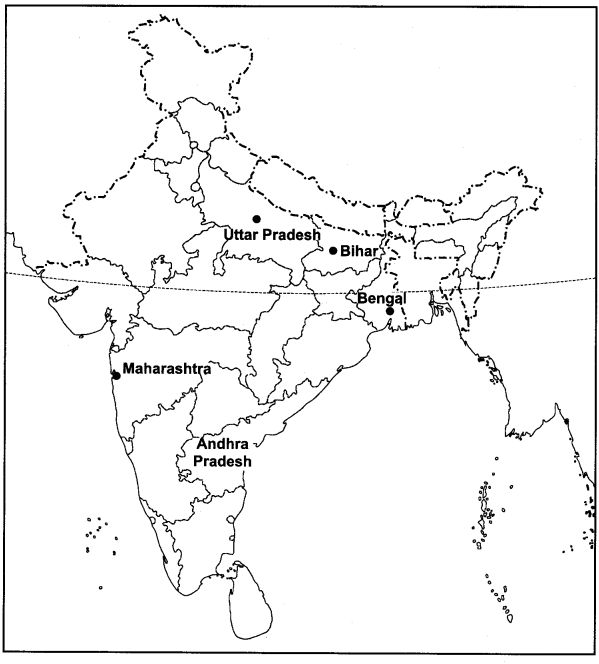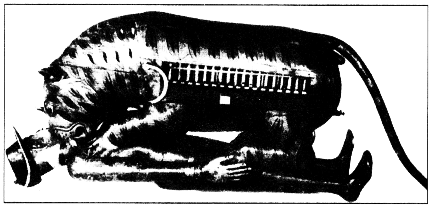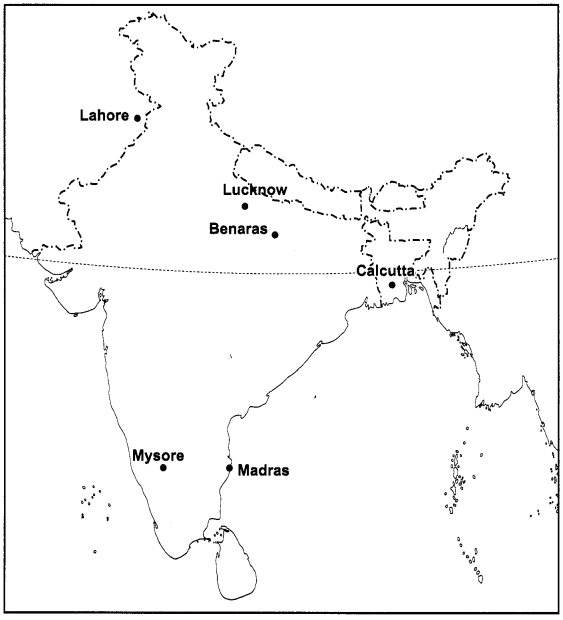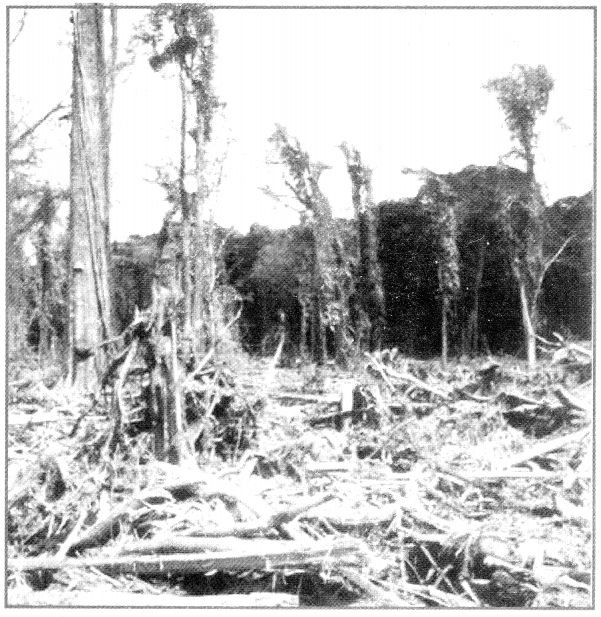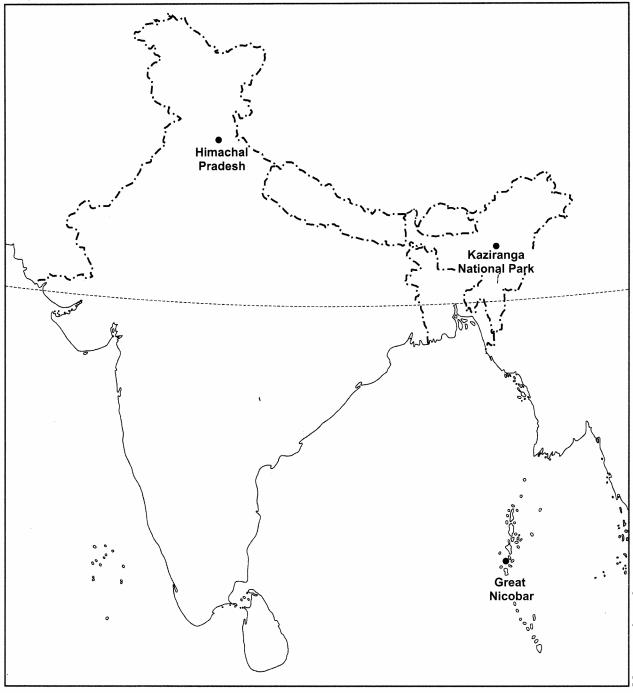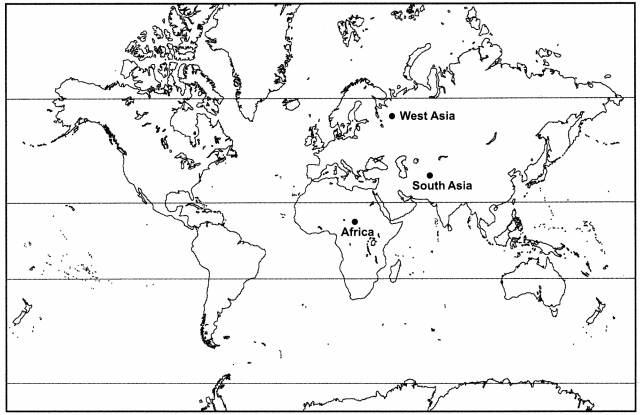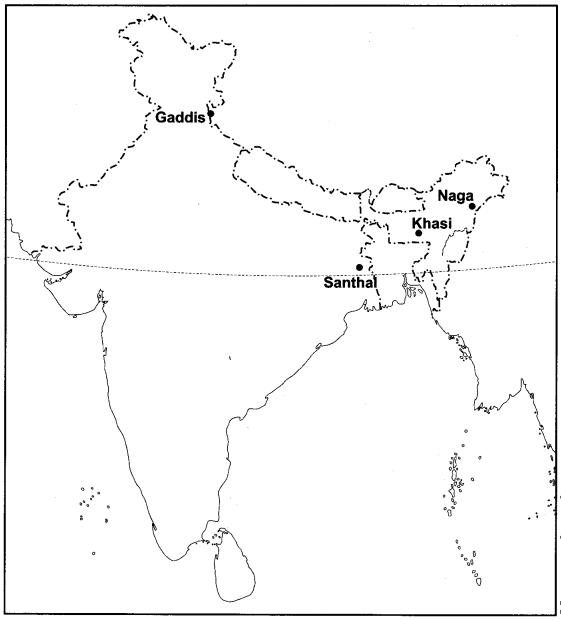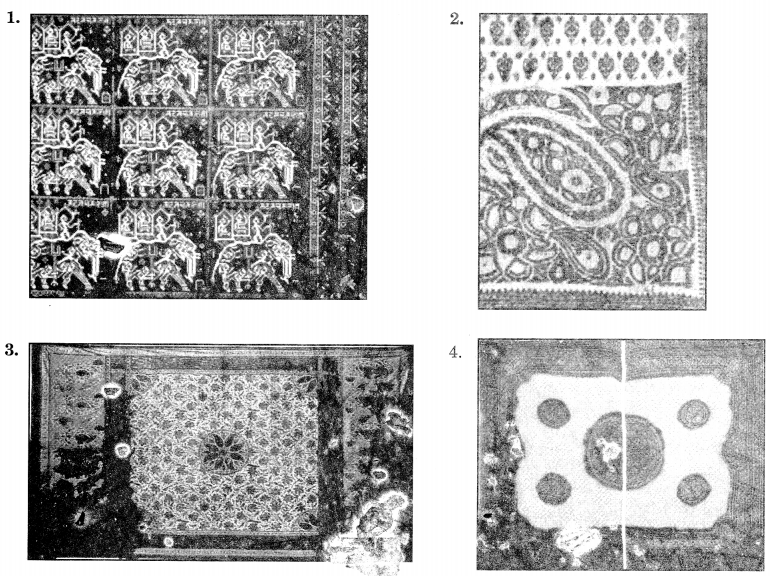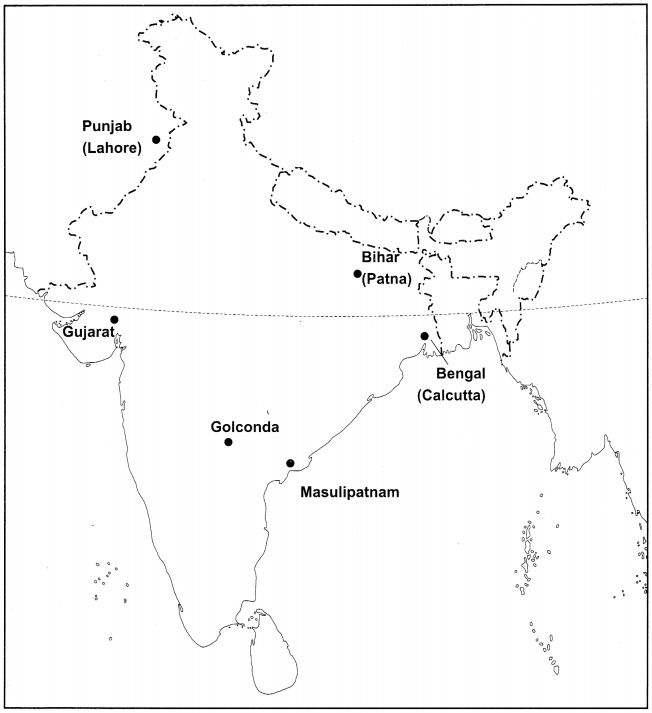India After Independence Class 8 History Chapter 12 Extra Questions and Answers Social Science CBSE Pdf free download are part of Extra Questions for Class 8 Social Science. Here we have given NCERT Extra Questions for Class 8 Social Science SST History Chapter 12 India After Independence.
You can also practice NCERT Solutions for Class 8 History Chapter 12 Questions and Answers on LearnInsta.com.
Class 8 History Chapter 12 Extra Questions and Answers India After Independence
India After Independence Class 8 Extra Questions and Answer History Chapter 12 Very Short Answers Type
Question 1.
What was the clear challenge for the newly independent nation India?
Answer:
The clear challenge of the new nation was to lift it masses out of poverty.
Question 2.
Mention the years during which Constitution was framed.
Answer:
The Constitution was framed between December 1946 and November 1949.
Question 3.
Name the Chairman of the Drafting Committee of the Constituent Assembly.
Answer:
Dr B.R. Ambedkar was the Chairman of the Drafting Committee.
Question 4.
For what purpose Potti Sriramulu died of fasting?
Answer:
He died of fasting for a separate state for Telugu speakers.
Question 5.
What had became the symbol of development in Independent India?
Answer:
Bridges and dams became the symbol of development in Independent India.
Question 6.
With which country’s help was the Bhilai Steel Plant set up?
Answer:
With the help of Soviet Union in 1959, Bhilai Steel Plant was set up.
Question 7.
Name one of the world’s largest slum from Mumbai.
Answer:
Dharavi in Mumbai is one of the world’s largest slum.
Question 8.
When did India celebrate its 60th Independence day?
Answer:
On 15th August 2007, India celebrated in sixty years of independence.
Question 9.
In which year was the Punjab divided?
Answer:
In the year 1966, Punjab was divided.
Question 10.
How was Dr B.R. Ambedkar respectfully referred?
Answer:
Dr B.R. Ambedkar was respectfully referred to as Babasaheb.
Question 11.
What was the major debate in the Constituent Assembly concerned to?
Answer:
Major debate in the constituent Assembly concerned to language.
Question 12.
When was the planning commission setup by the government?
Answer:
Planning commission was set up in 1950 by the government.
Question 13.
What was the main focus of Ilnd 5 year plan?
Answer:
IInd 5 year plan strongly focussed on the development of heavy industries.
Question 14.
Mention some features the Indian Constitution.
Answer:
Free press, independent judiciary, unity in diversity.
Question 15.
What is Franchise.
Answer:
The Right to is called Franchise. .
Question 16.
What is meant by the term Refugee?
Answer:
Refugee is the one who had been forced to leave his/her country/home due to any specific condition on reason.
Question 17.
Define union list.
Answer:
Union list is the discussion about the subjects such as taxes, defence and foreign affairs, basically the responsibility of the centre is discussed.
Question 18.
What subjects does concurrent lists deals with?
Answer:
Subjects such at forest and Agriculture.
India After Independence Class 8 Extra Questions and Answer History Chapter 12 Short Answers Type
Question 1.
What was the promise made to major linguistics groups by Indian National Congress back in 1920’s ?
Answer:
The promises made by the Indian National Congress in 1920’s to the major linguistic groups were that once the country won independence, each major linguistic group would have its own province.
Question 2.
Describe about Dr B. R. Ambedkar in short.
Answer:
Dr. B.R. Ambedkar (1891 – 1956) was respectfully referred to as Babasaheb, he belonged to a Marathi speaking dalit ‘Mahar’ community family. He was a lawyer and economist, he was best known as a revered leader of the dalits and the father of the Indian Constitution.
Question 3.
What were features of the Constitution of India?
Answer:
The features of the constitution were:
Ist: The adoption of the Universal Adult Franchise, means that all Indians above the age of 21 would be allowed to vote in state and national elections.
IInd: The Constitution guaranteed equality before the law to all citizens, regardless of their castes or religious affiliation.
IIIrd: The Constitution offers special privileges for the poorer and the most disadvantaged Indian. The practice of untouchability was abolished.
Question 4.
What was the topic of discussion for the Constituent Assembly for many days? Also define what is meant by state lift?
Answer:
The Constituent Assembly spent many days discussing the powers of the central government verses the power of the state governments.
State list: comprised of the subjects rise education and health that would be taken care of principally by the states.
Question 5.
What were the problems of development added to the problems of unity at Independence? Answer:
After independence also vast majority of Indians lived in villages. Farmers and peasants depended on the monsoon for their survival. So did the non-farm sector of rural economy and if the crops failed due to any reason the barbers, carpenters, weavers and other services groups were not paid.
In cities, factory workers lived in crowded slums with little access to education or health care. New nation got challenge for lifting its masses out of poverty by increasing productivity of agriculture and job creation.
India After Independence Class 8 Extra Questions and Answer History Chapter 12 Long Answers Type
Question 1.
What had happened after the creation of Andhra Pradesh and what was the report submitted by states reorganization committee says?
Answer:
After the creation of Andhra Pradesh other linguistic communities also demanded their own separate states. A state Reorganisation Commission was set up, which submitted its report in 1956, recommending the redrawing of district and provincial boundaries to form compact provinces of Assamese, Bengali, Oriya, Tamil, Malayalam, Kannada and Telugu speakers respectively.
The large Hindi-speaking region of North India was broken up into several states. A little later, in 1960, the bilingual state of Bombay was divided into sperate states of Marathi and Gujarati speakers.
In 1966, the state of Punjab was also divided into Punjab and Haryana, the former for the Punjabi speakers (who were also mostly Sikhs), the latter for the rest (who not spoke Punjabis but versions of Haryanvi and Hindi).
Question 2.
Although Many Indians contributed to the framing of Constitution perhaps it is said that most important role was played by Dr BR Ambedkar. Explain how?
Answer:
Many Indians contributed to the framing of the Constitution. But perhaps the most important role was played by B.R. Ambedkar, who was chairman of the drafting committee, and under whose supervision the document was finalized.
In his final speech to the constituent assembly, Dr Ambedkar pointed out that political democracy had to be accompanied by economic and social democracy. Giving the right to vote not automatically lead to the removal of other inequalities such as between rich and poor, or between upper and lower castes.
Picture Based Questions Class 8 History Chapter 12 India After Independence
Look at the pictures given below and answer the Questions:
Picture-1
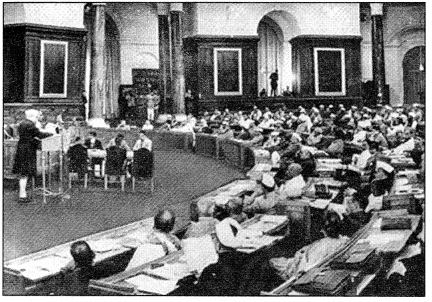
Question:
1. What does the picture show?
2. What does the resolution outline?
Answer:
1. The pictures show Jawaharlal Nehru introducing the resolution of the Constitution.
2. The resolution outlined the objectives of the Constitution.
Picture-2
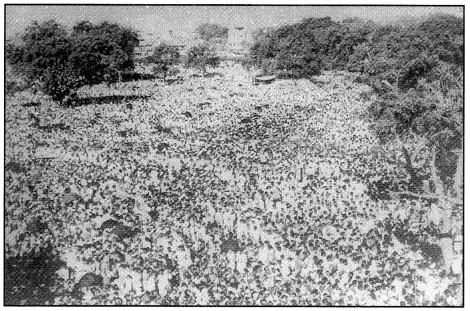
Question:
1. What does the picture shows?
2. By whom was Mahatma Gandhi assassinated?
Answer:
1. The picture shows the Mahatma Gandhi’s ashes being immersed in Allahabad, February 1948.
2. Gandhi was assassinated by a fanatic, Nathuram Godse.
Picture-3
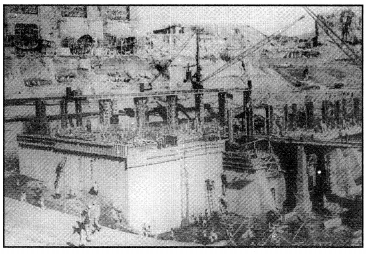
Question:
1. Where is the Gandhi Sagar Bandh built?
2. When was it completed?
Answer:
1. It is built on the Chambal river in Madhya Pradesh.
2. It was completed in 1960.
Map-Based Questions Class 8 History Chapter 12 India After Independence
Look at the map given below and answer the following questions.
Question 1.
Locate the following princely states.
(i) Jammu and Kashmir
(ii) Rajasthan, Gujarat
(iii) Hyderabad
(iv) Manipur
Answer:
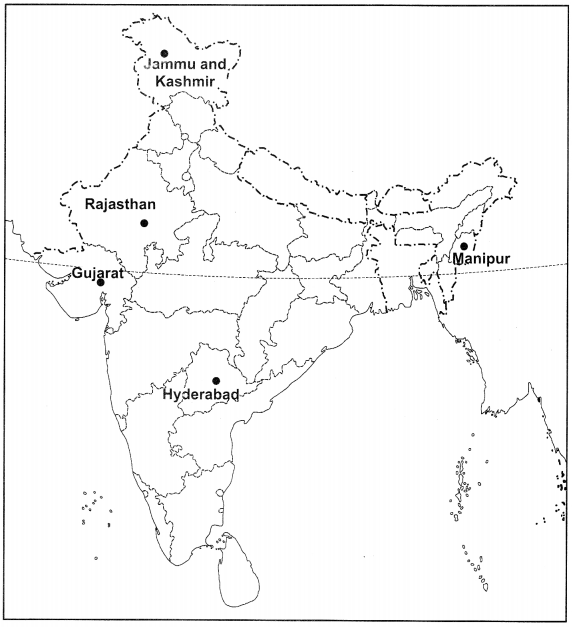
Question 2.
Locate the following Indian states
(i) Andhra Pradesh
(ii) Uttar Pradesh
(iii) Bihar
(iv) Bengal
(v) Maharashtra
Answer:
